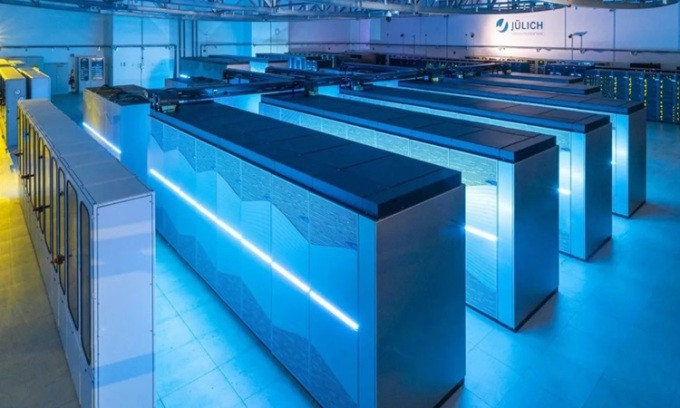The JUPITER supercomputer located in Germany has the potential to become the world's fastest supercomputer for AI applications.

Jülich Supercomputer Center, where JUPITER is installed
Europe is preparing to build the world's first exascale supercomputer, called JUPITER, which could become the world's fastest and most powerful machine,Interesting EngineeringJUPITER will pave the way for unprecedented scientific and creative discoveries in fields ranging from climate change to quantum physics, by performing calculations that few computers in the United States and China can do today, the American Space Agency said on December 29.
This supercomputer aims to break new ground in Europe by performing a trillion arithmetic operations per second. This exceptional level of computing power will provide new directions for scientific simulations and drive revolutionary achievements in the field of artificial intelligence.
An exascale supercomputer can perform a trillion calculations per second, equivalent to the computing power of 10,000 laptops combined. Currently, there are only two officially recognized exascale supercomputers in the world: Frontier at Oak Ridge National Laboratory in Tennessee and Aurora at Argonne National Laboratory in Illinois. However, China may have at least two untested exascale machines that rank among the world's 500 most powerful supercomputers.
JUPITER (Joint Undertaking Pioneer for Innovative and Transformative Exascale Research) will be built at the Jülich Supercomputer Center in Germany by the European High Performance Computing Consortium (EuroHPC JU), a collaboration between the European Union and private companies. In a recent interview, Professor Thomas Lippert, director of the Jülich Supercomputer Center, said that JUPITER has the potential to become the world's fastest supercomputer for AI applications, with more than 90 exaflops at 8 bits. An exaflop is a measure of the combined computing power of computer systems. Each exaflop is equivalent to one billion billion calculations per second.
JUPITER will have a unique modular design consisting of two main parts: the Booster module and the Cluster module. The Booster module will use NVIDIA's advanced technology (nearly 24,000 NVIDIA GH200 GPUs) to provide computing power for artificial intelligence and simulation applications, such as training AI models that can generate realistic images and text.
The Cluster module will use SiPearl’s new Rhea processors, manufactured in Europe, to tackle complex tasks requiring high memory bandwidth. The two modules will be integrated by Eviden into their energy-efficient, liquid-cooled BullSequana XH3000 platform, which will be run as a single supercomputer using ParTec’s ParaStation Modulo operating system. JUPITER is the result of a collaboration between ParTec, Eviden, SiPearl, and NVIDIA with the European scientific community. It will be the first exascale supercomputer in Europe.
JUPITER installation will begin in early 2024. Users can test and prepare the system under the JUPITER Early Access program, which allows close collaboration between stakeholders to build and optimize the best possible version of the system for the scientific community.
Philippe Notton, CEO of SiPearl, said the machine has the potential to top the Top 500 list if no faster rivals emerge. Notton said JUPITER’s final ranking will depend on the performance of the institutes that run the machine and the hardware benchmarks. But he also stressed that cutting energy consumption is important, since the cost of running JUPITER for three years is about $553 million, including an estimated $110 million in annual electricity costs.
According to VnExpress